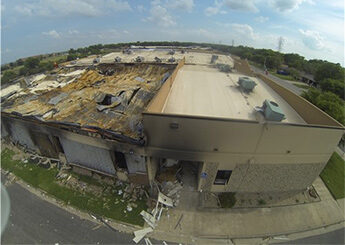CSB releases final report on West, TX blast

Waco, TX – The Chemical Safety Board is calling on OSHA to address the hazards posed by fertilizer grade ammonium nitrate in light of the chemical explosion that killed 15 people and injured more than 260 others on April 17, 2013, at West Fertilizer Co. in West, TX.
CSB issued recommendations for OSHA and the Environmental Protection Agency as part of a final report that was approved Jan. 28. CSB investigators listed a series of shortcomings in regulation, emergency planning and incident response that contributed to the scope of the tragedy. The blast took place after about 30 tons of fertilizer grade ammonium nitrate, stored in combustible plywood bins, overheated in a fire at the facility.
OSHA does not cover fertilizer grade ammonium nitrate in its Process Safety Management Standard or clearly identify the chemical in its Explosives and Blasting Agents Standard, CSB said. The agency recommended that OSHA revise either standard to address safe storage of fertilizer grade ammonium nitrate, construction materials and fire suppression systems. Investigators also recommended that existing chemical facilities be required to replace bins made of wood and other combustible materials with non-combustible materials.
CSB produced a 3-D, animated analysis of the incident in a 12-minute safety video titled, Dangerously Close: Explosion in West, Texas.
CSB Chairperson Vanessa Sutherland said she hopes the agency’s report and video will increase awareness about the hazards of fertilizer grade ammonium nitrate.
“This is one of the most destructive explosions ever investigated by the CSB,” Sutherland said in a press release. “The CSB’s report found that limited regulatory oversight, poor hazard awareness, inadequate emergency planning, and the proximity of the facility to nearby homes and other buildings all led to the incident’s severity. The proposed safety recommendations address steps needed to help prevent a similar tragedy in the future.”
Post a comment to this article
Safety+Health welcomes comments that promote respectful dialogue. Please stay on topic. Comments that contain personal attacks, profanity or abusive language – or those aggressively promoting products or services – will be removed. We reserve the right to determine which comments violate our comment policy. (Anonymous comments are welcome; merely skip the “name” field in the comment box. An email address is required but will not be included with your comment.)

